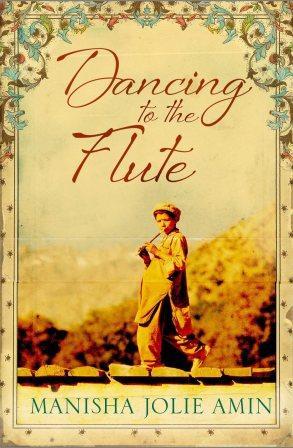You have no items in your cart. Want to get some nice things?
Go shopping If The Alchemist or The Kite Runner haven’t satisfied your curiosity on the spiritual development of wandering boys, Manisha Jolie Amin’s début novel should be your next read. Dancing to the Flute is an exercise in palliative care to a dying theme. I can’t help but feel I’ve read this novel before – this sense of deja vu most probably the result of a high number of books out there concerned with debunking materialism through prophetic journeys in the wilderness.
If The Alchemist or The Kite Runner haven’t satisfied your curiosity on the spiritual development of wandering boys, Manisha Jolie Amin’s début novel should be your next read. Dancing to the Flute is an exercise in palliative care to a dying theme. I can’t help but feel I’ve read this novel before – this sense of deja vu most probably the result of a high number of books out there concerned with debunking materialism through prophetic journeys in the wilderness.
Set in India, Dancing to the Flute is the story of Kalu, an orphan, and his mission to find meaning in his own life. Kalu, seeking a doctor for an apparent case of athlete’s foot, instead has his wound healed by a Vedic guru. The price for this medical treatment is an opportunity to learn how to play the flute and receive teaching in the meaning of life – a bargain if ever there was one. There is little evidence that Kalu wants to go on a transcendental trek through no-man’s-land, but nevertheless he buys a flute and gets on with the job in earnest.
Secondary characters here are far more compelling than the boy at the centre of the novel, if indeed he is at the centre of the plot at all. Kalu, as is often the case with novels where the protagonist hasn’t yet found a voice, is defined by those he meets. Mercifully for the reader, Amin succeeds in skilfully and quickly establishing characters that fill the vacuous personality of her main man. The challenge in having a lead character who is searching for an identity is that everyone he meets is more interesting than he.
The novel’s one saving grace is the beauty of its writing. Amin’s talent for evocative prose is undeniable – occasionally overwritten, sometimes at the expense of substance – but resplendent nonetheless. In terms of highly structured narrative: I’d have welcomed one. Yet Amin’s vivid descriptive ability puts the reader at the heart of Indian culture in a way that makes us content just to be there.
Amin uses very many Indian words and phrases, helpfully including a glossary for the English reader, but having to find this word-list two or three times a page is a little tiring. (I hope, on a practical note, that any second printing makes the glossary more easily locatable.) That being said, the more one reads the heavy Indian vocabulary, the less one needs the glossary, in a way there’s a worthwhile lesson in introductory Hindi here.
Dancing to the Flute wanders around as much as the boy in the story, but it’s an enjoyable ramble. There are passages that would stand up to Salman Rushdie in evoking India’s unquestionably vibrant heritage. Publishers were right to snap up Manisha Amin, but this first novel is an indication of potential and not her Magnus Opus.

About David Stewart
David Stewart's background is in journalism both in newsrooms and freelance. He has done some sub-editing for nationals and reported for rural newspapers. David also enjoys reviewing the arts and reading all kinds of books.





Beautiful writing but one too many wandering boys? Review of Dancing to the Flute by Manisha Jolie Amin on Litro. https://t.co/8rslrVQuXo